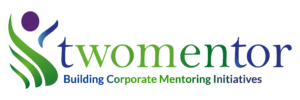Developing & Mentoring Your Junior Sales Force
“The best players do not always make the best coaches or mentors,” said a Commercial Real Estate HR leader Stephen* on the phone recently.
“I am leaving the company because they just handed me a phone book, a quota and want me to sink or swim. There has been almost no training, they get irritated when I ask questions and don’t even let me attend the meetings I set up,” said Rachel* who is in the Insurance business.
“Our senior brokers, the ones who are making 700k, a million+ a year. They don’t mentor. They give a new associate $20 and say ‘buy yourself a cup of coffee too.’ That’s the extent of it, but they think they are mentoring,” says Mitchell* a veteran executive who manages operations. “They are entrepreneurs and we barely see them in the office.”
We know that baby boomer sales rockstars are close to retiring and that our younger workforce needs more training and development to feel they can be successful (or they leave).
The proverbial old boy’s network exists yet Linkedin and other networking platforms are reducing social interactions as people Link-off the golf course and isolate behind the blue screens.
It’s time to double down on mentoring to prepare, engage, retain, diversify our company’s future rainmakers but how do we do it?
“My associate gets 30% (commission) on my deals now,” says SVP Jared.* It used to be 20%, but he has doubled the number of sales calls we go on and does the big research. “I mentored him when he started and now that our financial success is linked, I guess I am his sponsor as well,” states Jared. (We discussed that a mentor speaks with you and a sponsor speaks about you, champions you to others).
Jared, a people person who is in his 40’s meets regularly with three junior associates that do not report to him directly and often discusses:
1] How he and his associates set up and manage their pipeline.
2] Moves management.
3] How to deal with the “death valley” (rejection and no sales for a period of time) and his many failures.
4] How and where to best network + cold call.
5] Closing-the-deal strategies and breakthroughs.
6] Financial projections.
7] Where the best Greek food is near the office and more.
Linda*, Adrian* and Sara* started coming to him more and more for mentoring over the past six months as he was one of the few senior salespeople who would stop the world for them. Jared is generous with his time and shares that he gets a lot out of supporting them as well. People mentored him early on and he wants to pay-it-forward.
So what do you do to boost the development of your junior executives?
Well, to get started, we recommend the following three steps:
1] If you are in HR/learning/diversity do some speed/flash mentoring at lunch or a happy hour to break down the barriers and help people better recognize the value proposition of both helping others and asking for help. If you are a sales rainmaker, reach out and schedule coffee/lunch today with 1 – 3 people you can help. Don’t wait. In fact, pause from reading this article, send three texts. Your time = money and your investment of time in them = 10x.
2] Have people from session #1 (senior execs and non-reporting junior execs) agree to meet with each other three times over the next 6-8 weeks (or 6x over 6 months) to discuss:
Sample topics: Best deal, worst deal, last deal, skill(s) that I need the most to be successful, how to close, where to network, sales funnel, overcoming challenges, use of Linkedin, volunteer/board service, falling and then getting back up, and more.
Extra credit if the junior exec can attend or observe the senior exec on a sales call or two. When we run these Flash sessions for clients, we love to give out lunch cards or Starbucks cards to boost these 1:1 connections and illustrate the company values mentoring.
3] Provide mentor + mentee training (we can help) via webinar or in person. We also recommend co-sponsor training for mid-level to senior executives (how do people from different industries champion each other for opportunities with a WIN/WIN mindset).
“My associate just found in his research that a transaction happened that we didn’t know about,” said Jared. “We need to send them an invoice right away.” When he told me the dollar amount, well, my eyes bugged out that his associate caught that one.
###
Julie Kantor is CEO of Twomentor, LLC a high impact company that provides mentor strategy, execution, mentor and mentee trainings, flash mentoring, business case keynotes and more. We’d love to connect and discuss your needs. To schedule, contact, Sophia@twomentor.com













